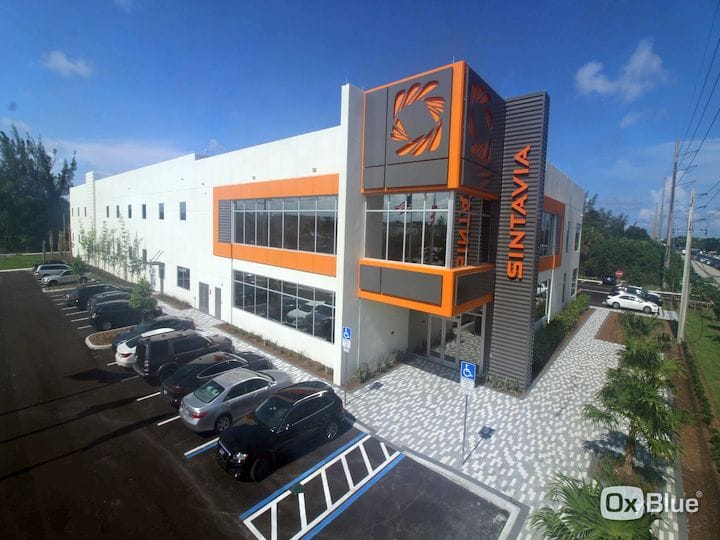![Sintavia’s new manufacturing facility in Florida [Source: Sintavia]](https://fabbaloo.com/wp-content/uploads/2020/05/image-asset_img_5eb097a4c2ed4.jpg)
Sintavia opened a 55,000-square-foot advanced manufacturing facility, featuring 3D printing.
The Florida-based company specializes in producing components for the aerospace and defense industries and leverages a number of advanced techniques. Their service has been in operation since 2012, when their founder left an aircraft manufacturer to found the new service bureau specifically with advanced manufacturing in mind.
They currently operate a fleet of sixteen large metal 3D printers from five different manufacturers, including:
-
Four EOS M400-4 laser machines
-
Two EOS M400-1 laser machines
-
Four EOS M290 400W laser machines
-
One TRUMPF TruPrint 3000 laser machine
-
Three SLM Solutions 280HL 400W twin laser machines
-
One Concept Laser M2 400W laser machine
-
One Arcam Q20+ electron beam machine
These machines all have slightly different performance characteristics, so this allows Sintavia clients to select the machine of choice for their application.
But it’s not just about 3D printing; the company correctly recognizes there’s a lot more to the lifecycle of producing a quality aerospace component. In fact, they operate with an aerospace quality management system that should be amenable to many of their clients.
Their services begin with design, where they help clients design for additive manufacturing, which is usually a challenge for those new to the technology. The company also provides a comprehensive list of quality testing procedures:
-
Metallographic Examination per ASTM requirements
-
Scanning Electron Microscopy
-
Hardness Testing
-
Rockwell Hardness Testing
-
Knoop Hardness Testing
-
Vickers Hardness Testing
-
Sub-ppm Elemental Analysis of metals using an Inductively Coupled Plasma (ICP) mass spectrometer
-
Failure Analysis Testing
In addition, they provide a wide array of post-processing and finishing services and 3D scanning capabilities.
With their new plant the company has space to expand their operations by adding more equipment. Evidently the design of the new facility’s layout is optimized for the aerospace work they typically undertake.
They explained the nature of the expansion:
“Sintavia’s new facility houses over $25 million of advanced manufacturing equipment including medium and large scale metal printers, EDMs, post-processing machines, wet-booths, and multiple furnaces. Some of the industrial engineering improvements of the building include separate manufacturing rooms segregated by alloy, a large-scale powder management system, an uninterruptable power supply, an inert gas farm, and a final production acceptance quality control room.
The new facility is capable of producing tens of thousands of parts representing in excess of $100mm of AM revenue annually. The expansion is anticipated to bring more than 130 new jobs for skilled employees and support staff to South Florida.”
Their CEO, Brain Neff, said:
“As we grow, it will serve as a template for future vertically-aligned advanced manufacturing facilities around the U.S. and the world.”
This sounds to me very like they intend on replicating this factory configuration in future expansions. This move is not just to get more space for immediate operations; It’s perhaps the first of several large expansions.
I’ve seen this pattern before: a manufacturing service discovers the optimum way to organize their work and suddenly attracts much new business, leading to significant expansions. To me this is simply another form of the industry “getting it”. If individual businesses have a hard time getting their head around 3D printing, services like Sintavia and others are popping up to help.
Via BusinessWire and Sintavia











MakerOS has a brilliant hidden feature in their online service: a sophisticated 3D print pricing calculator that allows operators to determine exactly how to price prints.